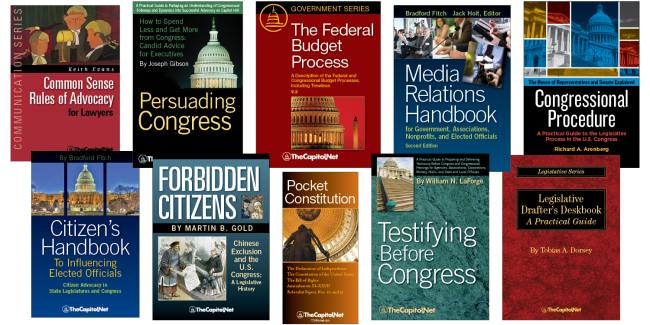From the Congressional Glossary – Including Legislative and Budget Terms
Office of Management and Budget / OMB
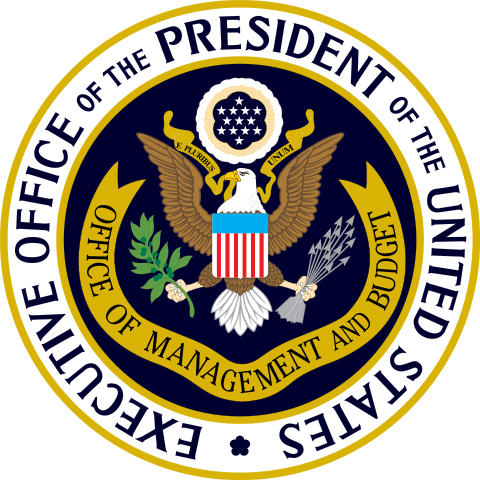
The core mission of OMB is to serve the president of the United States in implementing his vision across the executive branch. OMB is the largest component of the Executive Office of the President. It reports directly to the president and helps a wide range of executive departments and agencies across the federal government to implement the commitments and priorities of the president.
As the implementation and enforcement arm of presidential policy government-wide, OMB carries out its mission through five critical processes that are essential to the president’s ability to plan and implement his priorities across the executive branch:
– Budget development and execution
– Management
– Coordination and review of all significant federal regulations by executive agencies
– Legislative clearance and coordination
– Executive Orders and Presidential Memoranda to agency heads and officials
The Office of Management and Budget plays many roles of interest to Congress and important to the operation of the executive branch, but two roles in particular stand out as of interest to Congress: coordinating preparation and defense of the annual budget, and legislative coordination and clearance. OMB organizes the preparation of the annual budget in the executive branch, and works to implement the president’s guidance and decisions during that process. The OMB director and his staff bring all decisions together in the budget documents that the president submits to Congress. The OMB director is also one of the lead off executive witnesses each year before several committees to explain the president’s budget recommendations to Congress and to defend them, and continues to play a key role throughout the year as congressional committees draft appropriations, tax, and other budgetary legislation.
Managing as President: Nixon Creates the Office of Management and Budget (OMB)
OMB also seeks to ensure that the administration speaks with one voice through the system of legislative coordination and clearance. OMB Circular A-19 describes policies and procedures; it is supplemented occasionally by memoranda to department and agency heads from the OMB director.
Legislative clearance and coordination covers legislation that agencies wish to transmit to Congress. The process allows other interested agencies to have input and for OMB to consider the draft legislation’s compatibility with the president’s legislative program. If the legislation is cleared, there will be “no objection” to the legislation, or it will be “in accord with the president’s program,” that is, it implements a portion of the president’s legislative program. The agency makes this information known to Congress with its transmittal. Legislative coordination and clearance similarly covers agency testimony and reports, critical to the committee stage of the legislative process.
As legislation moves to the floor of the House or Senate, OMB regularly prepares “statements of administration policy,” or SAPS, on major legislation. Interested agencies, White House offices, and OMB each contribute to these documents, which are then made available to Congress.
Also see OMB Circular A-19; Office of Information and Regulatory Affairs / OIRA; President’s Budget; § 4.180 Office of Management and Budget, § 7.40 Presidential Budget Process, § 8.20 Congress and the Executive: Legislation, in Congressional Deskbook.
More
- Office of Management and Budget (OMB)
- Statements of Administration Policy – OMB
- Office of Management and Budget – Wikipedia
- “Office of Management and Budget (OMB): An Overview,” CRS Report RS21665 (45-page PDF
 ).
). - “Peer Review: OMB’s Proposed, Revised, and Final Bulletins,” CRS Report RL32680 (45-page PDF
 )
) - “The Information Quality Act: OMB’s Guidance and Initial Implementation,” CRS Report RL32532 (32-page PDF
 )
) - “The Executive Budget Process Timetable,” CRS Report RS20152 (8-page PDF
 )
) - “Overview of the Executive Budget Process,” CRS Report RS20175 (3-page PDF
 )
) - “The Role of the President in Budget Development,” CRS Report RS20179 (5-page PDF
 )
) - “The Role of Departments and Agencies in Budget Development,” CRS Report RS20198 (5-page PDF
 )
) - “Baselines and Scorekeeping in the Federal Budget Process,” CRS Report 98-560 (6-page PDF
 )
) - “Office of Management and Budget Circular A-76 and the Proposed Moratorium on Future DOD Competitions: Background and Issues for Congress,” CRS Report R40854 (36-page PDF
 )
)
Courses
- Congressional Operations Briefing – Capitol Hill Workshop
- Drafting Federal Legislation and Amendments
- Writing for Government and Business: Critical Thinking and Writing
- Custom Training
- Congressional Operations Poster, with Federal Budget Process Flowchart
- Federal Budgeting, a Five-Course series on CD
- Congress, the Legislative Process, and the Fundamentals of Lawmaking Series, a Nine-Course series on CD
Publications
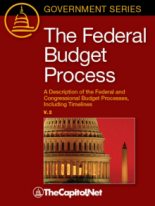
The Federal Budget Process 2E |
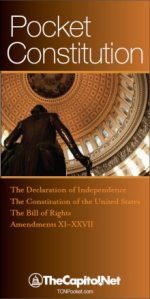
Pocket Constitution |
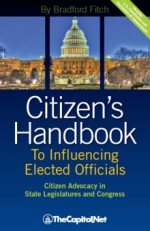
Citizen’s Handbook to Influencing Elected Officials: A Guide for Citizen Lobbyists and Grassroots Advocates |
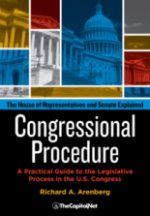
Congressional Procedure |
CongressionalGlossary.com, from TheCapitol.Net
For more than 40 years, TheCapitol.Net and its predecessor, Congressional Quarterly Executive Conferences, have been teaching professionals from government, military, business, and NGOs about the dynamics and operations of the legislative and executive branches and how to work with them.
Our custom on-site and online training, publications, and audio courses include congressional operations, legislative and budget process, communication and advocacy, media and public relations, testifying before Congress, research skills, legislative drafting, critical thinking and writing, and more.
TheCapitol.Net is on the GSA Schedule, MAS, for custom on-site and online training. GSA Contract GS02F0192X
TheCapitol.Net is now owned by the Sunwater Institute.
Teaching how Washington and Congress work ™

